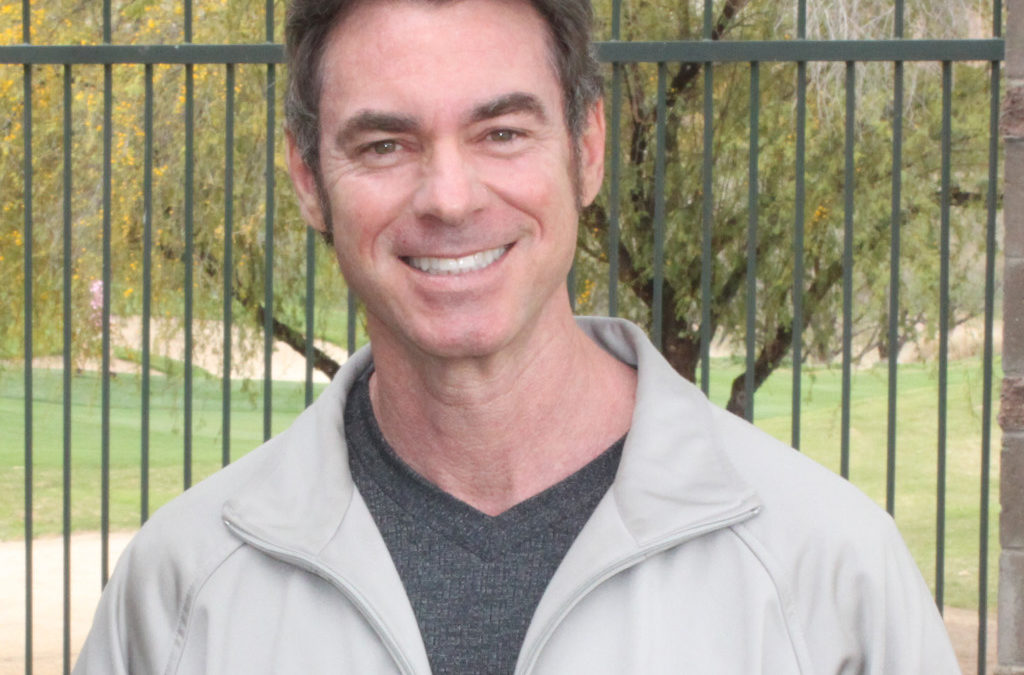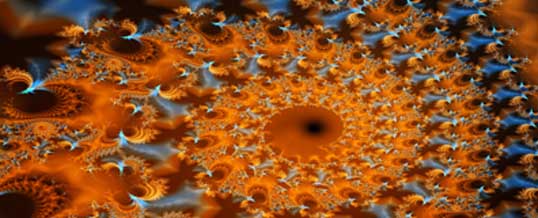
by Peter Winslow
In this day and age, it’s rather uncommon for people to think of the challenges they face or the maladies they suffer as having anything remotely meaningful to contribute to their lives.
In fact, we often consider these events to run counter to any meaningful purpose and indeed, many have resigned themselves to a belief that the conditions they struggle with have sucked all meaningful content right out of the very fabric of their existence.
Is it really so? Is there truly little or nothing of merit to be gained from the lessons that come from the trials and tribulations inherent in modern life, or from the quest for freedom from illness and suffering we so fervently seek?
In my own quest for freedom I came to learn that the first and most pressing need that took me in the direction of recovery from disease was this: Adjust the negative attitude, and end the personal hostilities.
Get over it, and get on with living your life.
Were it not for my disease, I’m certain I would not have learned this towering principle of self-healing and higher awareness in a timely manner.
In fact it was the emergence of Ankylosing Spondylitis that led me directly to the wisdom I needed to lay my personal struggles and emotional hardships aside. I mean, compared to AS, how bad could any of that stuff – the petty personal issues and emotional resentments – really be?
All the drama and self-image challenges I had meticulously focused on and actively fomented throughout my life soon paled in comparison to what became truly important – dealing with AS. I had found a larger goal, and a life mission: Discover a path to out-maneuver and outlive the autoimmune disorder, once and for all.
As I evolved beyond the need to find fault with myself and my condition, and moved beyond the bad habits of blaming and shaming those who had “victimized” me, an interesting development began to occur. The more I freed myself from the emotional stress and strain, the better I felt, and the more empowered I became.
With an emphasis on physical (and emotional) movement, including weight-bearing exercise, mental discipline and healing meditations, I began to steadily improve. I made the space for true change to manifest, and incrementally it happened. At long last I freed myself from the ravages of pain and suffering that had seemed so very insurmountable not so very long ago.
How did it come about? It all began with a simple adjustment in attitude, nothing more. This adjustment started a tiny snowball rolling down a hill, as they say, which inevitably agglutinated into a behemoth of power and force, bowling over the obstacles and nay-sayers in my way.
My hope is that you find it in yourself to reverse the resentment, anger, hopelessness, victimhood and other hurtful emotions you have borne for so long, and create the space for a true change of heart. This is the first step to lead you through the mist on your path of healing in body, mind and spirit.
Were it not for the adversities you’ve faced, you might never have found the way.
Peter

by Peter Winslow
Recently I was asked by a reader to discuss the science of healing. It’s a pretty hefty request, so let’s boil it down to basics:
The first thing to note is that healing is not a scientific domain.
It may surprise you to know that the concept of “healing” is rarely discussed in medical schools. These schools focus on the physical sciences that govern matter and molecules, the tissues they can observe with the tools of technology. They discover ways to interact with those tissues, and they translate their findings into methods of treatment.
Healing, on the other hand, is what you do. The doctor doesn’t prescribe it and nobody can sell it to you. Although its effects can be observed, the power of healing is invisible and internal, occurring within the body.
Medical treatments are designed to help your body do what comes naturally. The proper treatment is administered, and then the healing wisdom of the body takes it from there.
For instance, if you break your arm, a medical professional can set the bone in a cast. The treatment is needed for the bone to heal properly. But it it’s not the cast that heals the broken bone; it’s the healing essence in the body that knits the bone cells back together again. The work is done by an internal force that science has never seen directly, and cannot fully explain.
When we speak of healing we’re talking about something that cannot be reliably quantified by scientific control groups and empirical data. Healing ultimately rests within the individual; one person may heal from a specific condition while for some reason, the next one does not.
Medical practitioners are at best only able to state the odds for healing and recovery. If you’re given good odds for success, it makes you feel better, more confident, with an expectation of a happy outcome. That expectation is a very powerful aspect of your own healing ability.
Not incidental to this discussion is the awareness of the energy which animates all living organisms, a force we call life. It sustains and heals the material body until the point at which it departs and leaves the lifeless matter behind.
This suggests that the healing essence in living tissue is a part of the life force within us. It has never been conclusively defined by medical science or agreed upon by world cultures, and it has never been seen under a microscope. Evidence-based mechanical medicine cannot yet focus on the energy that does the healing in our bodies, nor does it really need to.
Medical treatments originate externally; the power to heal your body, your mind, and your life occurs internally. This means you have more influence over it than you may even know.
It’s time you knew that.
Peter

by Peter Winslow
Have you heard that the quality of your thought equals the quality of your life? Well then, the time has come to understand exactly what it means for you and your future.
If you have Ankylosing Spondylitis, the quality of your life is probably not what it once was. And yet, there are people with AS who believe the best is yet to come. They expect the best for themselves from the world around them, and this mindset makes a colossal difference to the quality of their lives.
Are you one of them?
If you’re like most, the answer is a resounding “NO! How can I be upbeat and optimistic when I’m in constant pain?”
I know that a goodly lot of your life is spent searching for an escape from the pain and duress of AS. It all seems to boil down to a constant effort to escape from reality, which you know to be all but impossible.
So the question becomes “How can I change my reality?”
And the answer is, very simply: Start by changing your thoughts.
Now, if this sounds hokey or airy-fairy to you, fine; you can be an onion and continue on as you were.
But if you’re up for a spirited lesson, I challenge you to disprove this nugget of wisdom and try to render it incorrect.
It’s true because all change begins in thought. If a cure-all for AS was suddenly invented (and I know you’re waiting for one) then the process started this way: We need a cure for AS, so let’s invent one. That, in fact, is a powerful thought. It’s the impetus that gets the ball rolling.
If you wanted to get that cure-all, the process would begin with a thought: I damn well need to get that cure, no matter what it costs! Where can I get it?
In the absence of a single treatment to cure you, the most important thing for you to do is realize that your thoughts predetermine your reality.
Let me give you a thought… a very, very powerful message that can change your life. Here it is…
Ankylosing Spondylitis can be healed.
This I know. How? Because there are many people, including me, who have healed from AS. Nothing anyone can say or do can change that reality.
If there is one thought you could choose to absolutely change your life, this is it: I really can get better.
Let go of your doubts and focus on that.
If there’s one thought for you to meditate on every day, it’s this: I can heal.
Don’t let anybody or anything ever take that away from you. The quality of your life depends on it.
Peter

by Peter Winslow
“Although the world is full of suffering, it is also full of the overcoming of it.” – Helen Keller.
Every day I grapple with the knowledge that you are out there, doing what you can to cope, and persevering in the face of adversity. If I could deliver you to freedom from AS, the world would be a better place.
A better life, a better world, a new awakening… that is the fervent desire of us all. In order to prevail, we must employ the most powerful mental ally we have – unshakable vision backed up with absolute faith.
“Faith is taking the first step even when you don’t see the whole staircase.” – Martin Luther King Jr
Vision is an unstoppable force that moves mountains and changes lives. History is replete with examples of people from every walk of life – people like you and me – who have accomplished the unimaginable through the power of their irrepressible vision.
When my own symptoms were intolerable, I found relief in remaining convinced that a brighter day was sure to come. My daily focus reflected it, and my mantra became:
This too shall pass…
…which gave me the strength and the inner resolve I needed to rise up and meet the challenges of life with chronic pain.
Repeat these words of wisdom often, believe in them, and never give in: This too shall pass.
There is unlimited potential for scientific breakthroughs and personal miracles, all that we could ever ask and intend for, which may appear at any moment. Who are we to deny it?
Since time immemorial, wiser men than I have encouraged us to take heart and never stop believing in ourselves. Choose to believe that you will one day awaken to a better world and a better life, and have faith in your vision.
There is a powerful message in this quote by Rachel Naomi Remen:
“Healing may not be so much about getting better, as about letting go of everything that isn’t you – all of the expectations, all of the beliefs – and becoming who you are.”
When you recognize this, heed it and take meaningful action, everything in your life will improve. New opportunities and experiences appear, and what you really intend then comes into view. It all begins with you, and most importantly, what it is you are focused on.
Trust your most powerful ally, and as always, keep the faith.
Peter

by Peter Winslow
Studies now prove that your emotions are inextricably linked to your physical well-being.
Think of how your blood pressure rises significantly when you feel anxious or threatened. High blood pressure has become a major problem for many people, and it’s a pretty clear example of what is called the mind-body connection.
When emotional health is unbalanced, it consumes a huge amount of your energy. Negative emotions take many forms which work their way to the surface as anger, depression, anxiety, jealousy, envy, rage, passive aggressive behavior, and a host of other moods.
Common sources of chronic stress are bad memories of the past and anxiety and worries about the future. I find it interesting to note these major contributors to ill health are no more than phantom thoughts about events and circumstances that aren’t even happening at the present time, and may never happen at all.
When you consider major stress, you might think of life-disrupting events like a death in the family, loss of a job, divorce, a case of identity theft or a significant financial loss. But actually, the most common stressors in life come in little packages: deadlines that have to be met, the milk glass that broke at dinner, yard work that keeps piling up, the phone call you need to make but don’t want to.
Day-to-day hassles like these usually don’t feel terribly stressful, and by themselves they don’t make much of an impact on overall emotional well-being. But research says that it’s the little daily stresses that affect your health the most and even make you more susceptible to serious illness and disease.
Recent scientific studies suggest that, taken together, every day hassles and annoyances may be the biggest threat of all. The overdue phone calls, minor accidents and unfinished business add up to major, chronic stress – and that can lead to conditions like diabetes, heart disease, stroke and cancer.
Depression is another clear example of an emotional imbalance. There are lots of forms of it, such as genetic, hormonal, situational or chemical, but in all cases depression is caused or exacerbated by negative thought patterns.
Negative thought patterns create a “chemical cascade” in the body, the domino effect of neurotransmitters and other chemicals as they surge through the brain and direct other chemicals to excrete into the body in a chain-reaction response to the thought.
Doctors can alter or block the brain chemistry with pharmaceutical drugs and other forms of treatment that are intended to interrupt the feedback loop between the thoughts and the chemistry that the thoughts have created. But when the treatment fades, the symptoms often return.
A combination of medication and therapy is considered by most doctors to be the best treatment for most types of depression but only a small percentage of the people who need it will ever get it.
In most cases, counseling and cognitive behavioral therapies go overlooked or ignored. These methods require the patient to make a commitment to take at least some responsibility for their own condition and to do their part in the healing process, and many are reticent to go there. Until they do, the condition will continue to plague the mind and body of the individual, and chronic illness is the eventual result.
Peter

by Peter Winslow
In my last post, I talked about the philosophy and teachings of the Greek physician Hippocrates, the man considered to be the father of Western healing.
Hippocrates advocated nature’s ability to heal illness and restore proper health to an individual. Across the world, eastern cultures also believed there is a natural healing source flowing within us. This healing source integrates with our human bodies and provides the energy that affects the material elements, tissues, and systems that our bodies are made of.
Hippocratic medicine was the basis of treatment for many centuries in Europe. The objective was to empower the individual with the means to inspire and facilitate healing, and Hippocrates had instituted a rational method for the practice of medicine.
With the emergence of the Italian Renaissance in the seventeenth century, scientists demanded a more rigid definition of what “rational” was going to mean. They argued that human senses could no longer be trusted and that medical facts must be measured through a complex and stringent system of criteria, a set of rules that must be proven and verifiable. This negated the idea that a person’s health was contingent upon “inner balance” – a concept difficult to quantify – and the premise that attitude and emotions may be involved in the healing process, concepts deemed “unprovable” at the time.
With the science of modern anatomy, physiologists rationalized that the systems of the body were mechanistic and could be taken apart for analysis. They maintained that the human body is a magnificent machine, a series of parts that operate together like a finely tuned engine. They observed how the individual parts operated and discovered that food and oxygen mixed together in the blood to become the fuel that powered the figure. The new model of the human body was understandable, predictable and unfettered by whims of fancy, certainly not connected to the most unpredictable element in humankind, the mind.
Nature can do more than physicians.”
— Oliver Cromwell
This new model of science flew in the face of the great power in Europe, the Holy Roman Catholic Church. The church considered the human body to be a reflection of God, made in His image and off limits to scientific dissection and study. Scientists often found themselves under scrutiny by forces that were not amused by scientific revelations. For many years the atmosphere was dangerous and even fatal to those who dared to buck the power of Rome.
The problem was solved not by scientists or holy men, but by a popular and influential philosopher. Rene Descartes asserted that the human body and the human mind were sole and separate entities, mutually exclusive of each other. This notion divided a person into two halves; one part spirit, belonging to God and the church, and the other part material and subject to scientific exploration.
Descartes described the mind as spirit, a holy element of human existence, as the Greeks had alluded to centuries before. He understood the body to be a purely physical entity which could continue to operate “were there no mind in it at all.” Descartes maintained that the body was of the Earth and natural, while the mind was holy and transcendent, existing to hold dominion over the natural world.
These and other scientific ideas came to dominate the landscape of seventeenth century Europe, assisted in no small way by the work of Sir Isaac Newton. Newton postulated that the universe itself was a great machine, subject to rational laws and mechanical principles, and that humans are subject to the same laws as the great creation itself.
The themes were repeated over and over – the universe is a machine, and like it – the body is a machine, quantifiable through the study of its parts, independent of any mind that may govern it. This approach led to the science of reductionism, and from its inception a profusion of scientific exploration gave rise to what is now called the Age of Reason.
Like modern science, advances in medicine are remarkable and inspiring. We can now cure many infectious diseases and repair and resuscitate the broken bodies of accident victims; we can even keep people alive who cannot do so for themselves. With respirators, feeding tubes and intravenous devices we can keep a person’s vital signs operating beyond the point of natural death, tethering them to their bodies until some force heals them or the plugs are pulled and they are allowed to pass.
It’s all very awe inspiring and miraculous but more and more, something is woefully missing. It seems readily apparent to most of us that a person is more than the sum of his or her parts, and that a person’s thoughts, feelings and beliefs define who they are more accurately than their material body does.
Science has led us to the point where we can keep a person alive beyond any quality of life, an emotional concept subject to the opinions of the individual and experienced in his or her mind. Perhaps it’s time to take a larger view of the human condition and where we are headed.
Peter






